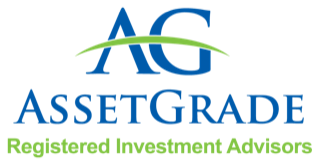
5 Year End Tax Tips
By: Susan Powers
Looking for tips to help you save money on your tax bill for 2018? Smart tax planning starts now rather than waiting until next year when it’s often too late. Here are 5 tips to help you take full advantage of tax reform.
1. Review your investments, ‘harvest’ losses
Given recent market volatility, you may have losses in your taxable accounts. You can lock in those losses for tax purposes, while still being invested for the long-term by buying something similar, but not identical. You can use these tax losses to offset capital gains when you file your tax returns. This is a concept known as tax-loss harvesting. For example, if you sold one investment and realized a gain of $5,000 and then sold another at a loss of $4,000, you reduce your taxable gain to $1,000. If your loss is larger than the gain, you can deduct up to $3,000 of the net loss against ordinary income.
2. Bunch up itemized deductions
The standard deduction increased dramatically with tax reform, from $13,000 to $24,000, so it may not be attractive any longer for you to itemize deductions. It might still make sense to itemize deductions if you make your January mortgage payment in December to get an extra month’s interest deduction and add up your medical expenses. For 2018, expenses in excess of 7.5% adjusted gross income are deductible. This is reduced from the 10% threshold in 2017. You obviously can't control when you get sick, but if you’re close to the 7.5% threshold "bunch up" procedures to maximize any deductibility.
3. Donate appreciated assets
Assuming you’ve owned the asset for at least one year, you can get a two-for-one tax break. You avoid the capital gain from selling the investment and you can write off the current market value – not just your what you paid for it.
4. Fully fund your employer-sponsored retirement plan
December 31st is the deadline for funding 401(k), 403(b) or 457 plans. If you haven’t maxed out, you may be able to bump up your contributions with your remaining paychecks. The limit for 2018 is $18,500, plus an additional $6,000 if you’re over 50 by the end of the year.
5. Open a retirement account for your small business
If you have a plan in place by Dec. 31st, you have until the due date of your tax return, including extensions, to fund your plan while still taking a deduction for 2018. If it’s just yourself or yourself and your spouse, consider a solo 401(k) or SEP IRA. With new pass-through rules for small businesses, these plans allow for more flexibility to maximize deductions.
https://www.assetgrade.com/blog/small-business-owners-3-retirement-plan-options-you
If you have any questions regarding year-end tax planning or overall financial investing please contact me or one of my partners and we would be happy to schedule a time to speak with you.
Let's get started,
Susan

